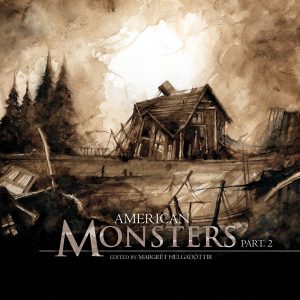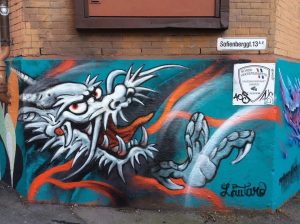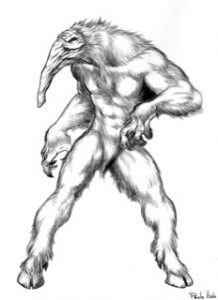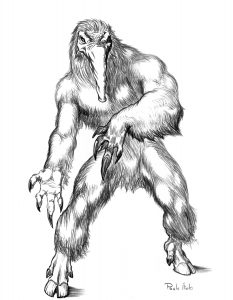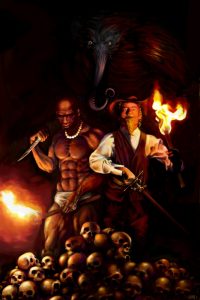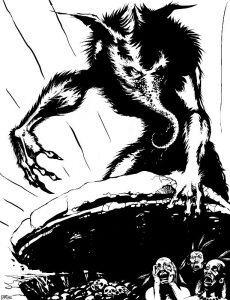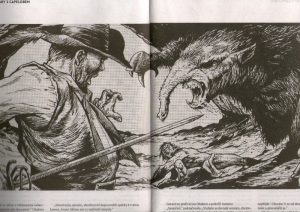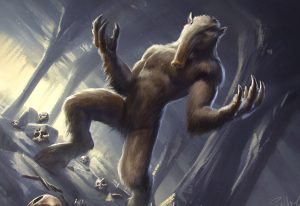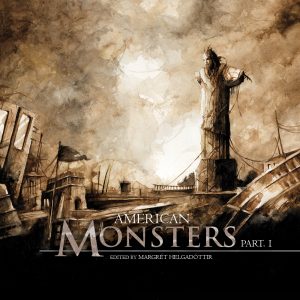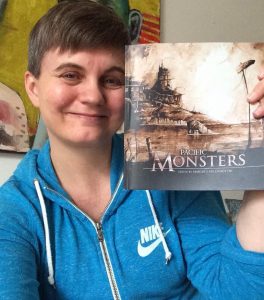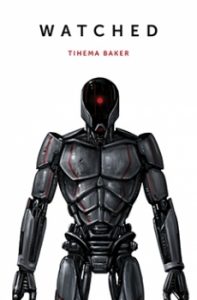SOUTHERN MONSTERS
by Teresa P. Mira de Echeverría
About fifteen years ago, a group of paleontologists made a discovery (just one of many that often take place in Argentine territory) that caught my attention. It was the fossil of a mosasaur, a marine animal that lived on this planet seventy million years ago. The name that the Argentine paleontologists gave to that fossil and the place where they’d found it really impressed me.
It is common that the denomination of a dinosaur or other prehistoric animal is based on the name of the region where it was discovered or after its discoverer. However, this mosasaur, this particular species, received a different name: Lakumasaurus antarcticus.
Yes, the specimen had been discovered in the southernmost place on Earth and bore the name of a mythological animal.
I loved the idea of a dinosaur with the name of a mythical spirit belonging to the Yámana culture, the original inhabitants of Tierra del Fuego and a large number of islands that mark the end of the American continent. “The end of the world”, as Jules Verne called that region … except for Antarctica.
That animal had lived on a very different Earth. What today is composed entirely of perennial ice at that time was a tropical, fertile and warm land. A landscape gone millions of years ago that could well have been another world.
When I was still studying astrophysics (later I decided to change my career and got my PhD in philosophy), I used to spend many hours at the Museum of Natural Sciences of La Plata (which is inside the campus). And every day I used to admire the replicas of the prehistoric animals that had lived on a planet very different from mine and, even so, the same one.
When I heard the news of the discovery of Lakumasaurus antarcticus I was already studying philosophy, in Buenos Aires. I could not help but to join the memories of my hours with those ancestral and gigantic bones with the myths that I was investigating at the time for my thesis. Yámana myths among many others. And the myth of Lakuma, the Spirit of the Waters, especially.
I felt that many things in my life were being reconnected by de magic of a very distant creature and place.
When, a few months ago, I was asked to write a story about a South American monster, I had no doubt about what it would be. It would have been impossible to speak of another monster that was not Lakuma: a “monster” that, at the same time, is mythical and scientific (indirectly, of course). And a monster that, far from being “terrible” to me, is deeply evocative.
After years of studying astrophysics and visiting the dinosaur room of the museum, after a PhD in philosophy and research, one day I decided to dedicate myself completely to my passion: writing. It seemed that I had always been jumping from one island of reality to another, just as the Yámanas had lived moving from one south island to another in search of food and dreams.
As a writer, Lakuma became a symbol of my life, of what it was and what it is, of worlds as different as the Cretaceous Earth and the Earth of the present … or as Mars, Jupiter or the space between asteroids. A symbol of the possibility of living completely different experiences and, from a certain point of view, all of them “in solidarity” with each other.
Thus my story was born, one that unites very different times, that interweaves mythical and factual realities, and that ultimately seeks to portray the importance of dreaming and creating “better worlds” (as the writer or the artist does) in the midst of a society that constantly attacks human dignity (a society that often considers its members an statistic).
There was a time when there were not in the South Pole, as there are today, miles and miles of ice as vast and deep as the geological abysses. A time where those lands exuded a green and exuberant vegetation. Days in which immense fusiform reptiles dominated the life and death of its warm seas, as if they were the spirit of its waters.
For millions of years, day after day, this was so. And if there had been humans at that time, they would never have hesitated to consider those landscapes and that life as “inevitable” or “eternal”. But now we know that was not the case.
Probably (hopefully) there will be a future in which humans will populate the Solar System and beyond as if we had always belonged to space. And surely there will also be those who will think of that reality as something “eternal” and “immutable”.
If science fiction is the literary form that announces change (all change), it is also the literary form par excellence that announces the possibility of the different, of the other. The non-immutability.
In our human history, monsters have always been “the Others”, the different ones, those who do not conform, those who demand to be respected for who they are.
Science fiction talks about monsters to be able to talk about the different in a symbolic way and show the need for that difference. The beauty of the monster.
Society loves the status quo, of course, but life shouts with all its strength that change is not only necessary but inevitable. The “monsters” exist, but they are not what people should fear.
We are all monsters as we seek our originality and we separate ourselves from “the establishment”.
Lakuma is my monster, the symbol of what adapts to the sway of the times (just like its body adapts to the waves of the sea), but also of what is capable of anchoring itself to the ideals of a better world (ideals dreamed and put into practice, like those of the Yámana shamans).
And what are those dreams that give me roots but also wings? Those that imply that everything can and should change, but that it is necessary to work so that this change is for the better. Those of a world in which we see the end of inequality between genders, the freedom to be what we are and want to be (and yes, I speak of the right to be LGBTIQ +), and where there is a true human brotherhood (beyond of cultures, socioeconomical differences, skin colors, countries of origin, capacities, etc.).
The Lakumasaurus antarcticus teaches us that nothing is permanent. That the kings of the sea, like the retrograde and inhuman ideas that are dominant in an era, must evolve or perish within the framework of the long marathon of time.
Lakuma, the mythological being of a vanished people, teaches us that the best of a human group, the noblest of what the human being can be, remains beyond themselves in those ideas that prove to be “monsters” before the dead and cold eyes of ossified prejudices.
In my case, these monsters allowed me to see myself (accepting myself as the “good monster” I want to be, without the fear of being different), and to think, to dream and to create worlds where the landscape is wide enough to shelter each and every one of the people (wonderfully different from each other, as we are all) who want to read my stories.
